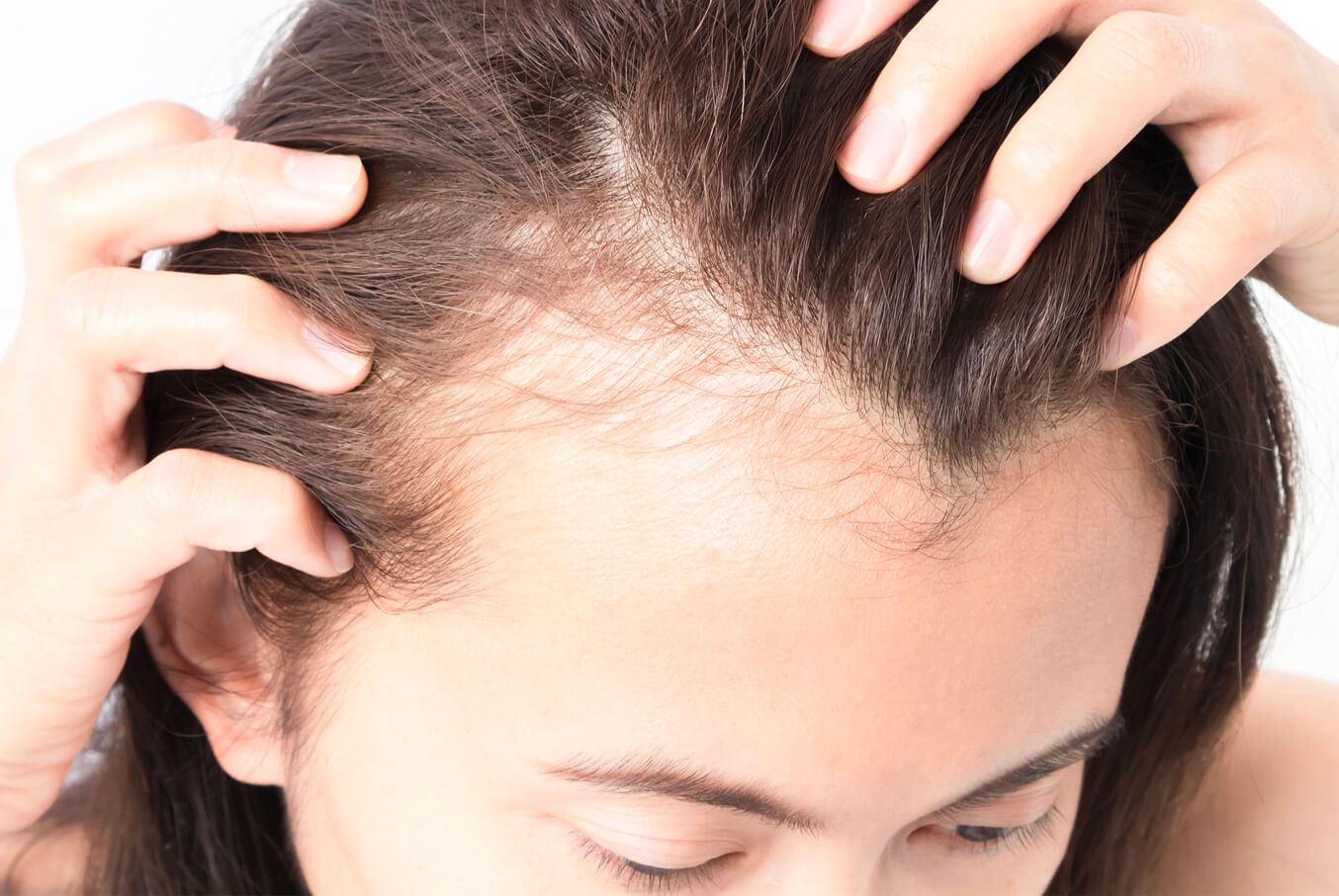Almost everyone would suffer from thinning hair at some point in their lives. Hair loss can be distressing and embarrassing for some people.
It may be a result of thyroid disease, childbirth & menopause (hormonal change), inflammation, cancer treatment, certain medications and protein or iron-deficient diets.
The most common form of male and female balding pattern is androgenetic alopecia. It is genetically inherited from either side of the family. This condition usually affects women at a later age than men. Hair on the front and the top of the scalp is genetically affected by Dihydrotestosterone (DHT) leading to hair loss. Unwanted hair loss can be treated using a variety of combination therapies.

DHT and scalp inflammation are the two leading causes of hair loss. Hair serums and shampoos using 2 active ingredients Procapil 3% and Phylderm (hydrolyzed soy protein) block the harmful effects of DHT on the hair. Applied directly to areas of hair loss and thinning hair, it will stimulate hair growth in dormant hair follicles. It is suitable for both men and women.
Minoxidil is a medication known for its ability to slow down or stop hair loss and promote hair regrowth. It is FDA-approved and commonly used for treatment of androgenic alopecia. Treatments usually include a 5% concentration solution that is designed for men and women.
As minoxidil is a vasodilator, it is speculated that by dilating blood vessels and opening potassium channels, more oxygen, blood and nutrients can be transported to the hair follicles. This can also cause follicles in the telogen phase to shed and be replaced by new thicker hair (in a new anagen phase). Minoxidil usually needs to be applied regularly (twice daily) for hair growth to be maintained. Upon discontinuation, new hair growth will stop.
Male pattern hair loss is the most common form of hair loss and about half of all men experience this by age 50. It is inherited from either side of the family and excess DHT is the leading cause.
Finasteride is used to treat mild to moderate male pattern hair loss on the vertex (top of head) and anterior mid-scalp area (middle front of head). Approved by the FDA, it works by acting as an enzyme inhibitor to reduce the production of DHT. Although finasteride helps increase hair growth, results may vary, so it may not be possible to grow back all the hair you have lost. It is important to note that finasteride can only be used for men and not for women.
Do you have questions about women’s
health and pregnancy?
Let us help you.